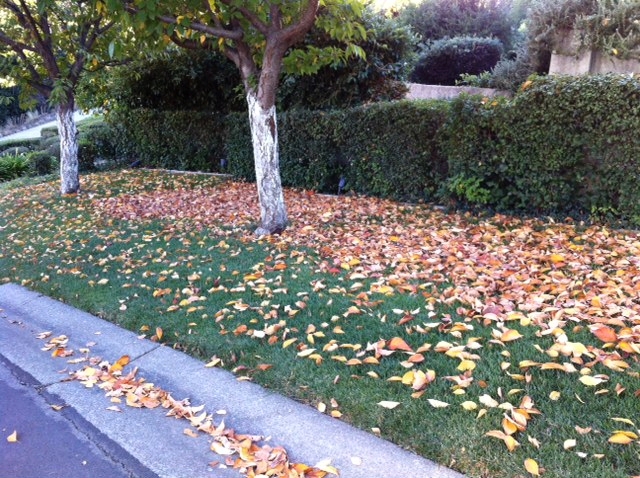Fall
Fall is a well-named season. Downed leaves are filling rain gutters, carpeting lawns and blowing into the nooks and crannies of yards all over Solano County.
I’ve noticed something that accompanies all those leaves hitting the ground, and it’s just as annoying: leaf blowers.
(I promise this will not be a screed on blowers. They have their place in modern yard maintenance. But do we really have to fire up those blowers at 7:30 a.m. on a Saturday? And, honestly, does anyone rake anymore?)
All of this begs the question: Do we really need to clean up and haul off all those fallen leaves, only to turn around and buy bags of mulch for our yards? What’s the research-based word on using our leaves as “free” mulch? The University of California Cooperative Extension Central Coast & South Region Center for Landscape and Urban Horticulture has created a list of the pros and cons of mulch that’s very helpful. Bottom line: It does indeed pay to use your own leaves as mulch. It helps to control weeds, conserve moisture, moderate soil temperature, enhance water absorption, prevent erosion, and enrich the soil.
The key is to use only healthy leaves. Don’t toss in the mildewed grape leaves or the rust-infested rose leaves. Do consider using those pecan or walnut shells as mulch.
Another suggestion I’ve seen in the quest for successful mulching is a leaf shredder. Or, if you don’t want to go out and pay for a shredder, use your lawn mower to chop up the leaves, gather them up and spread a 2- to 4-inch layer around your plants. Remember, mulch should be used as a top dressing only. Do not mix raw mulch in with your garden soil, as it will deplete the nitrogen level in your soil as it decomposes.
My husband rakes up the leaves on our property and tosses them into compost piles. We eventually get lovely shovelfuls of leaf mold, compost that uses only leaves. Here’s a link to another UCCE article on making leaf mold, which you can use as a soil amendment or mulch.

A neighbor’s normally spotless front lawn is barely visible under a blanket of newly fallen leaves. (Photo by Kathy Thomas-Rico)


Posted by Charmaine on November 24, 2013 at 7:26 PM